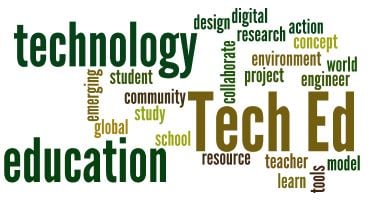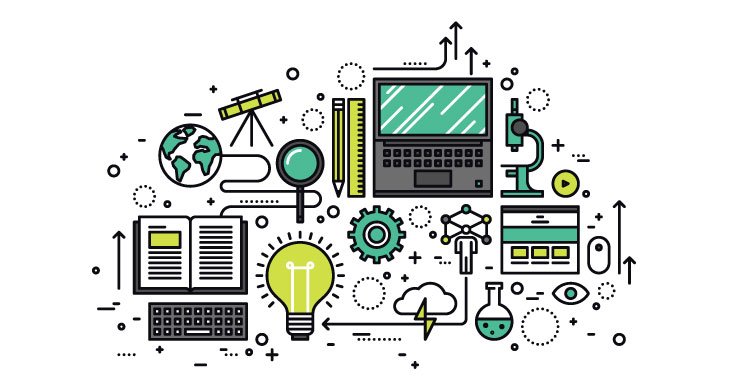Comprehensive Service Guides for Advancing Modern Technology Education And Learning in Schools and Colleges
The combination of modern technology education and learning into school and university educational program has ended up being an essential imperative in preparing pupils for a significantly electronic labor force. What certain techniques can be adopted to optimize their influence on both pupils and teachers?
Importance of Technology Education And Learning
As modern technology remains to evolve at an extraordinary rate, the significance of technology education and learning has come to be increasingly evident in today's culture. The combination of technology right into different facets of life demands that individuals have a foundational understanding of technological concepts and applications. This expertise not only improves employability but likewise promotes crucial reasoning and problem-solving abilities essential for navigating a vibrant labor force.
In academic establishments, technology education and learning gears up pupils with the ability to adapt to quick changes in markets driven by development. It motivates creative thinking and empowers learners to engage with arising modern technologies, from man-made knowledge to data analytics. Innovation education and learning advertises electronic proficiency, which is critical in an era where details is easily offered yet usually misleading.

Trick Elements of Effective Guides
Effective guides for modern technology education need to incorporate numerous essential parts to ensure that learners get one of the most from their experiences. A well-defined curriculum is important, describing the purposes, finding out outcomes, and the skills to be developed. This curriculum ought to be regularly updated to reflect the rapidly evolving technological landscape, making sure importance and applicability.
2nd, thorough sources that consist of books, on-line products, and hands-on devices are crucial. These resources ought to be varied and easily accessible, dealing with different discovering styles and preferences. In addition, incorporating real-world scenarios and instance researches can boost understanding and interaction.
Third, evaluation strategies should be included to evaluate learner progress successfully. These assessments should be differed, including summative and developmental examinations that line up with the discovering goals.
In addition, professional growth opportunities for teachers are important. Training workshops and programs can furnish teachers with the most up to date technical developments and instructional techniques.
Finally, fostering a collaborative discovering setting urges peer interaction and understanding sharing. By including these crucial parts, guides for innovation education and learning can significantly improve the learning experience, preparing trainees for future difficulties in a significantly digital world.
Structure Sector Collaborations
Building strong market collaborations is a crucial aspect of improving modern technology education. These partnerships in between universities and companies produce a dynamic ecosystem that profits pupils, companies, and educators alike. By fostering relationships with industry colleges, leaders and universities can align their curricula with the developing demands of the work market, making certain that pupils get pertinent skills and knowledge.
The development of internships, apprenticeships, and mentorship programs offers as a keystone of these partnerships. Such opportunities provide students with hands-on experience, improving their employability and practical understanding of technology applications. In addition, sector partners can use insights into arising patterns and technological improvements, enabling teachers to adjust their mentor methods as necessary.
Furthermore, collaborations can facilitate access to resources, such as equipment, software application, and funding for research study projects. These payments enrich the discovering environment and allow institutions to remain at the leading edge of technological advancement. Ultimately, constructing robust market partnerships is crucial for cultivating a proficient workforce that satisfies the demands of today's swiftly transforming technological landscape, while likewise driving financial growth and competition in the more comprehensive neighborhood.
Implementing Technology Programs
Carrying out modern technology programs within academic establishments requires a tactical technique that focuses on both curriculum advancement and source allocation. To launch successful technology combination, establishments should first analyze their existing infrastructure and determine voids in sources, including hardware, software application, this website and employees training. This assessment enables universities and institutions to produce a customized strategy that straightens with their specific academic objectives.
Following, it is necessary to create a thorough educational program that incorporates arising modern technologies and sector criteria. Collaborating with educators, market professionals, and stakeholders can make certain that the educational program stays efficient and appropriate in preparing trainees for the workforce (AI Tools). Furthermore, expert growth for professors is vital, as it furnishes teachers with the skills necessary to successfully show new innovations
Furthermore, institutions ought to highlight the importance of hands-on learning experiences, such as labs and workshops, that permit trainees to use theoretical expertise in useful setups. This experiential technique enhances interaction and fosters vital thinking. Protecting lasting funding via collaborations and grants can aid expand and keep technology programs, making certain long-term success and versatility in an ever-evolving technical landscape.
Determining Success and Outcomes
Evaluating the success and results of modern technology education and learning programs is vital for validating their impact and leading future enhancements. Effective dimension structures must include both measurable and qualitative metrics, giving a comprehensive view of program efficiency. Trick efficiency indications (KPIs) such as student registration numbers, retention prices, and training course completion percents provide beneficial measurable information.

Integrating standardized evaluations can further evaluate trainees' technical proficiencies and readiness for the workforce. Benchmarking against comparable establishments permits contextually relevant contrasts, highlighting locations for growth.
Ultimately, the continuous assessment of technology education programs cultivates a society of renovation, making sure that they evolve abreast with sector demands and academic requirements. By methodically determining success, organizations can not just show responsibility to stakeholders yet additionally boost their offerings, thus enhancing the finding out experience and preparing trainees for the additional reading ever-changing technical landscape.
Conclusion

The integration of modern technology education and learning into school and university curricula has actually come to be a vital vital in preparing pupils for a progressively electronic workforce.As technology continues to advance at an extraordinary pace, the importance of innovation education has ended up being increasingly apparent in today's society.In educational institutions, technology education and learning equips trainees with the capacity to adjust to quick modifications in sectors driven by development. By prioritizing technology education, organizations can grow a generation of educated citizens capable of leveraging modern technology for site link personal and societal innovation. The execution of robust assessment strategies makes it possible for establishments to determine success and outcomes, ultimately boosting the total effectiveness of modern technology education and learning efforts and preparing trainees for future obstacles.